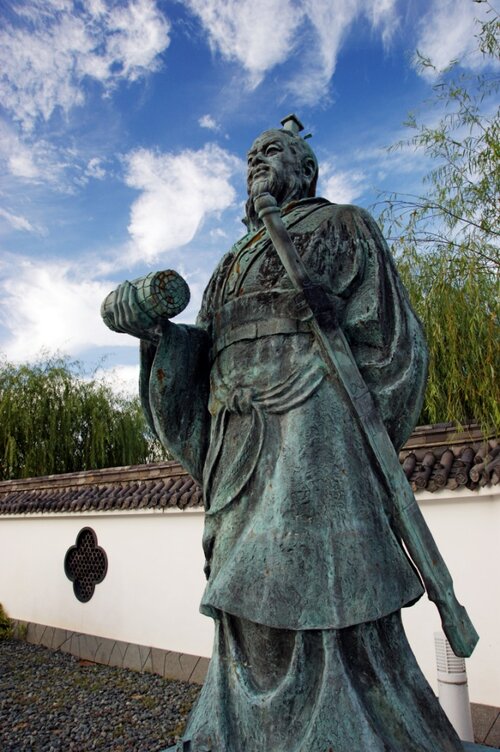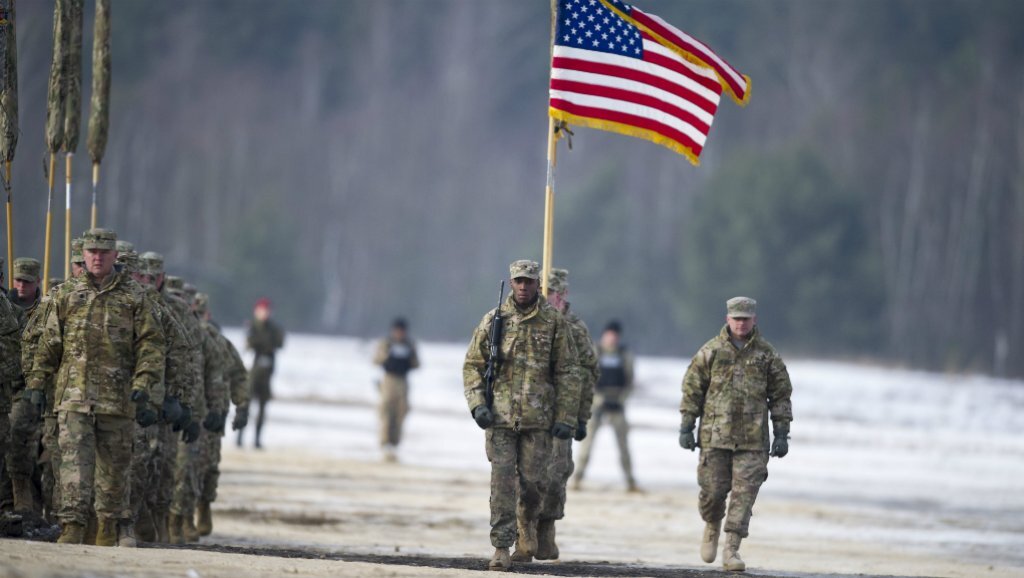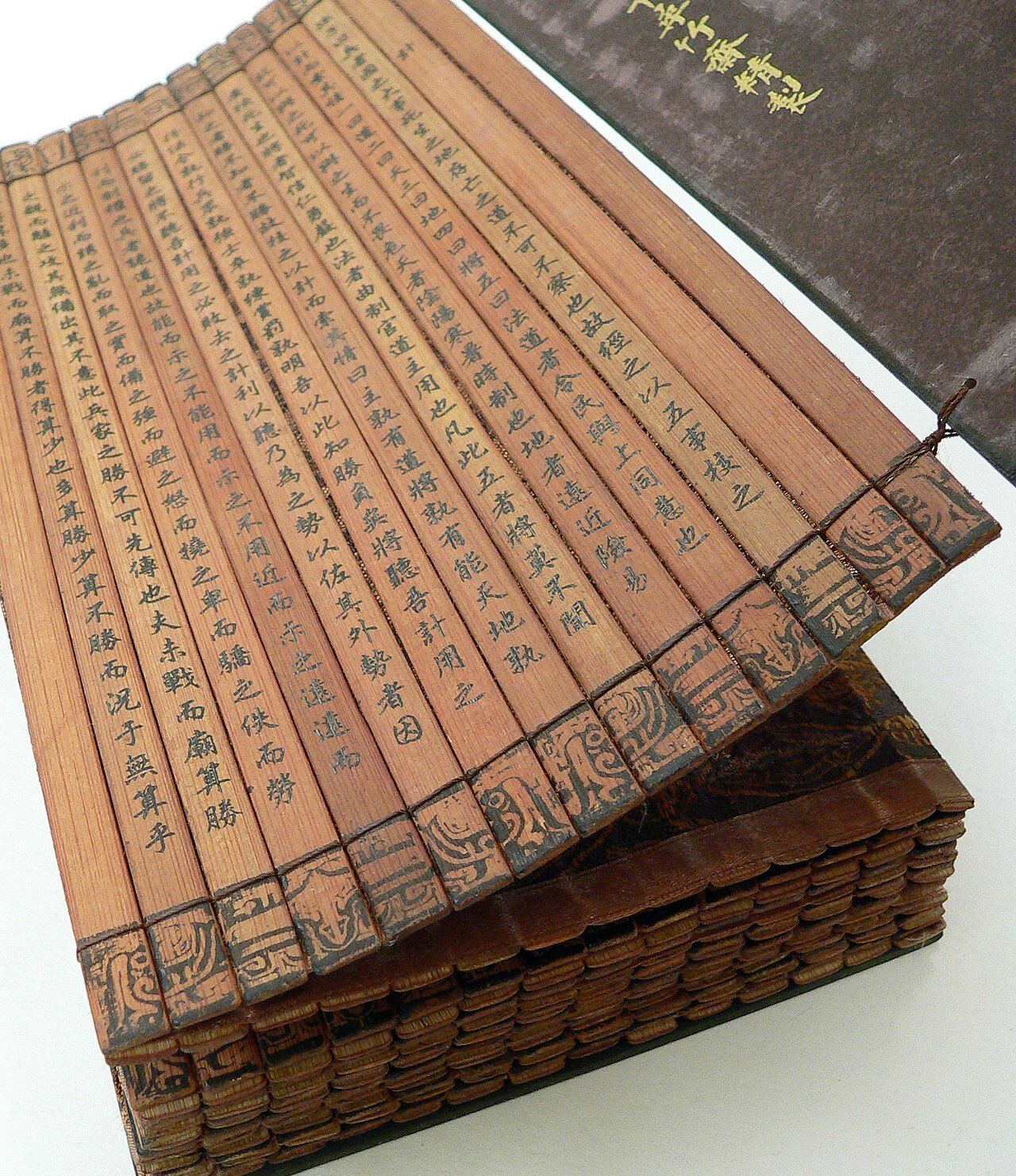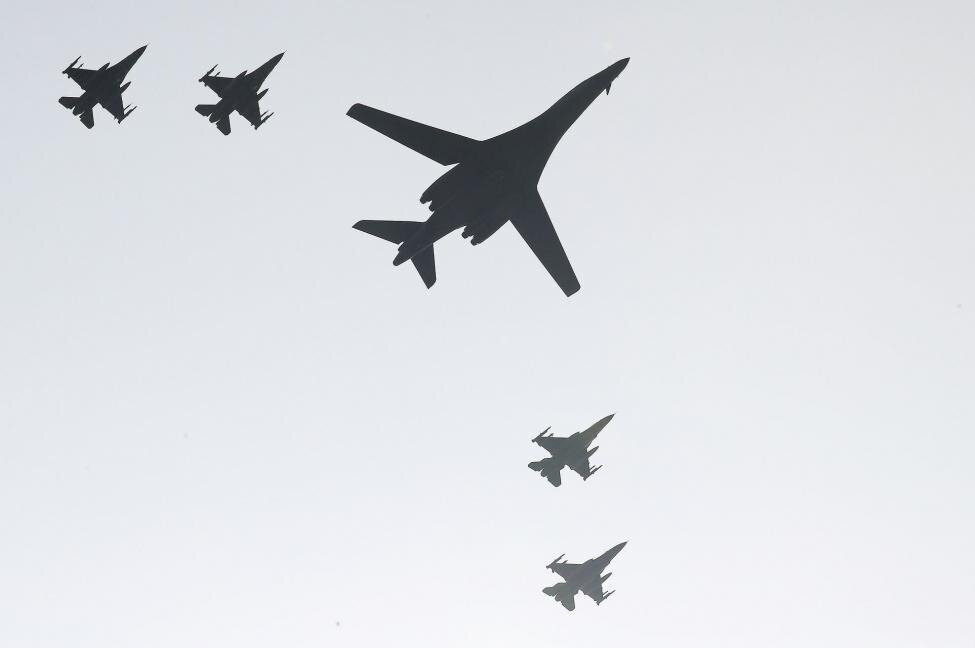By Geoff Hertenstein
Earlier this year, The Strategy Bridge asked university and professional military education students to participate in our third annual student writing contest by sending us their thoughts on strategy.
Now, we are pleased to present an essay selected for honorable mention by Geoff Hertenstein from the U.S. Marine Corps Command and Staff College.
Fear of great power parity creates panic among the strategy community that the United States is unable to respond to flashpoints of crisis across the globe, such as the Russian take over of Crimea or Chinese actions in the South China Sea.[1] Supposedly, American hesitancy rests on an inability to adequately strategize. To overcome this shortcoming, experts want the United States to be more like its opponents, adopting the teachings of Sun Tzu and winning wars before wars are fought via the use of diplomacy, intelligence collection, and economic power, thereby marginalizing the use of military force.[2] This insight means changing the calculus among these four instruments of national power, inviting disaster since one invites reconfiguring DIME without the “M” as DIE. In fact, the United States has put these elements into proper balance and sits firmly in the realm of strategic choice, where the country can choose its interventions when and where it wants to and on its own terms because it enjoys a preponderance of military force.
 Some strategists dismiss this advantage as a failure because it allows U.S. adversaries to prosper in a “gray zone,” a space of turmoil muting violence just enough to forestall a U.S. military strike.[3] Here, those acting inimical to U.S. interests seek to make gains. The fear is unfounded. Any gray zone is in large part a product of current U.S. military strength, and may not harbor grave threats more than it captures the import of Sun Tzu to dictate a favorable battlespace.[4] In sum, recognizing the need to maintain the gray zone as a measure of U.S. military advantage is of paramount importance. Simply rebalancing the instruments of national power is not in and of itself a strategy and risks reframing the strategic point of departure, and with it the enemy’s or competitor’s strategy. Such a change may well invalidate the dominant position the United States currently enjoys by reinforcing a false belief in near-peer competition leading to discarding a favorable end state.
Some strategists dismiss this advantage as a failure because it allows U.S. adversaries to prosper in a “gray zone,” a space of turmoil muting violence just enough to forestall a U.S. military strike.[3] Here, those acting inimical to U.S. interests seek to make gains. The fear is unfounded. Any gray zone is in large part a product of current U.S. military strength, and may not harbor grave threats more than it captures the import of Sun Tzu to dictate a favorable battlespace.[4] In sum, recognizing the need to maintain the gray zone as a measure of U.S. military advantage is of paramount importance. Simply rebalancing the instruments of national power is not in and of itself a strategy and risks reframing the strategic point of departure, and with it the enemy’s or competitor’s strategy. Such a change may well invalidate the dominant position the United States currently enjoys by reinforcing a false belief in near-peer competition leading to discarding a favorable end state.
Statue of Sun Tzu in Yurihama, Tottori, in Japan (Wikimedia)Blanketing strategic discourse in great power competition context with suggestions that America’s reliance on military technology and conventional equipment as it stands is not relevant in modern war, is not only wrong but also dangerous.[5] It is based on a false premise that the character of war has significantly changed because of the emergence of the “gray zone” and risks reframing the conditions that require solving in the first place. This thinking endangers strategic relevance of any planning effort from the start by fallaciously shifting the point of departure, and limits America’s options for addressing great power competition and the remaining range of military actions that may present themselves. As America’s military posture changes, so will that of potential adversaries and competitors. Future war dominates conversations in professional military education and some key academic outlets. Technology is changing, and the capability of potential chief competitors within their instruments of national power capacity is changing as well.
Admittedly, a military in being without intent to use it is altogether not a threat and blunts its teeth as an instrument of national power, speaking to the natural deterrence effect of the current U.S. military. However, non-use does not mean that it is not having an effect in the strategic environment. Changing the balance of DIME elements is zero-sum, as resources are finite across the government. The danger in this theory is that the gray zone paradigm by which current strategy is assessed to be failing exists because of the current capacity and capability of the U.S. military. Changing the character of the military as it stands fundamentally shifts the departure point for formulation of strategy and fails to provide an adequate range of options to policymakers to address threats that transcend and integrate with great power competition. This is not to suggest that the military should not evolve. However, the starting point for future strategy must account for the world as it is because of the way that it is; any changes may elicit an equal and opposite response from competitors, great powers or not, that reframe America’s ability to fight and to compete.
“DIME” Without the “M” is “DIE”
The theory of decreasing the military's role in DIME reframes the point of departure for strategy and ignores the actual on-going deterrent effects of the current military posture that have shaped adversary and competitor strategy. The premise of decreasing the role of the military in American strategy lies in the belief of a drastic change in the character of warfare that has rendered much of the current equipment and training obsolete.[6] Russia and China have successfully acted inside the gray zone leveraging actions short of war to their advantage and against American interests due to the existing asymmetry between militaries.[7] Unwillingness to respond to these nuclear powers with military action creates the perception that the military currently is useless and thus irrelevant in this new form of warfare.
However, the gray zone is not a perfect strategy for America’s chief competitors. The threshold for war generated by increased attention to gray zone activities has frustrates gray zone efforts.[8] Neither Russia nor China has attacked or seized territory where there were American forces present, particularly forward-deployed forces in the Baltic states in response to Russia’s Crimea seizure. It would be intellectually dishonest to credit military presence as the sole factor involved in Russia’s calculus in this situation.[9] However, if no military response was available, it is debatable that Russia would respond to other elements of U.S. or coalition national power with any degree of vigor.[10]

U.S. soldiers march during a bilateral military training exercise of US and Polish Forces in Zagan, Poland on January 30, 2017. (Natalia Dobryszycka/AFP)
Similarly, China has not seized any territory physically occupied by American forces, but America and others have been unable to deter China from illegally constructing islands in the South China Sea and threatening freedom of navigation there. This inability to influence China in combination with its growing anti-access/area-denial (A2AD) network have suggested that investing in equipment to physically overcome the threat such as the F-35 or nuclear powered aircraft carriers is bad strategy yielding expensive, vulnerable, and ineffective equipment.[11] This calculus suggests a notable change in the character of warfare, that the military's role is irrelevant, and therefore the solution must lie with the other instruments of national power. However, diplomatic means have failed, as China largely ignored United Nations rulings against the legality of its territorial expansion in the South China Sea, questioning the coercive power of other instruments of national power besides the military.[12]
Ignoring the deterrent realities of the current conventional force, strategists suggesting that current military equipment and acquisitions are irrelevant would logically not have a problem gifting all American aircraft carriers to China, the F-35 to Russia, and the AH-64 to Iran. Suggesting that the character of war is drastically different ignores the effect of the current strength and disposition of the military relative to competitors and adversaries. If the answer lies exclusively in diplomacy, intelligence, and economics, then it should not matter who has the best conventional kit. If the character of war is so different, perhaps Israel should consider getting rid of its missile defenses, scrap all Merkava tanks, and not maintain a standing army. Similarly, the Republic of Korea could abandon its defense of the Military Demarcation Line and resort exclusively to non-military dealings with North Korea. These actions are dangerous as all current strategy exists in its current condition in part because of the military posture of the states involved. It is difficult to divorce national survival from the existence of strong conventional forces in countries such as Israel and the Republic of Korea, whether or not they are used.
Taken out of the context of America’s dominant military position, the absurdity of the claim that the gray zone is indicative of a new way of war loses credibility. The gray zone exists because competitors do not want to engage in direct conflict with the U.S. military, and bending America’s strategy and military character around the emerging prevalence of gray zone activities because of a professed lack of success in “M” fundamentally misses the point.[13] If China or Russia were militarily superior to the United States, the discussion would presumably not be about gray zone threats, but through the lens of Cold War thinking, seeking assured deterrence through calibrated force posture against large, conventional formations. Further, beyond inter-state conflict, criminal organizations and terror groups with growing fighting power that become threats may not be subject to other elements of DIME. If the state of the world is arguably non-Westphalian, then diplomacy and economics may not be sufficient.[14] This position is not to say that a large conventional military force is the only answer, but criminals in possession of a monopoly on violence can impose or influence ideology, economics, and information from a position of power. Sometimes this has to be overcome by violence. The deterrent effects of the current conventional military cannot be understated, even in a non-state context.
The often quoted Sun Tzu passage of defeating an opponent without fighting at all is at the end of a paragraph describing the importance of having an army that is intact.

It is a false premise that Sun Tzu's concept of defeating an opponent before a battle stems from the other DIME instruments without the M.[15] The often quoted Sun Tzu passage of defeating an opponent without fighting at all is at the end of a paragraph describing the importance of having an army that is intact.[16] Not having a strong enough army changes the military and political calculus and thus the ability to influence an opponent with DIME. Sun Tzu next discusses that the best policy is to attack an opponent’s strategy.[17] If opponents such as that operate in the gray zone are to be credited with a superior application of Sun Tzu and have created an undefeatable method of attacking U.S. military superiority and thus strategy, in theory when American strategy changes in response, theirs should too.
What strategists must weigh are the potential outcomes of a gray zone against unknown and potentially worse conflict character should current relative military posture change. Classic strategists Mao and Che have differences in theory, but examining their conceptual similarities provides insight regarding the use of the gray zone by adversaries and competitors. Both theorists address guerrilla warfare and advocate for a means by which a lesser strength movement can defeat a more powerful force.[18] The gray zone is a modern means by which states operate using guerrilla principles, thus avoiding a conflict that could lead to disaster. This parallel is born out of the military asymmetry between the U.S. and its competitors. Both Mao and Che advocate for the use of guerrilla warfare until the revolutionary force is sufficient to defeat the main opposing army in conventional conflict.[19] After achieving military parity, or after an opponent surpasses the U.S. in military capability, the chances of direct conflict increase as the indirect method may no longer be necessary. Speaking to the tendency to transition to conventional combat is a testament to the temporary concession of military strength. This concept completes the gray zone analogy, as any competitor is more likely to exploit its dominance once the strategic calculus changes instead of continuing along an economy of force trajectory that was dangerous but necessary to overcome the previous asymmetry.[20]
China’s publication of Unrestricted Warfare provides further evidence. The document suggests American vulnerabilities beyond military conflict in the current context.[21] However, China is building aircraft carriers and fifth generation fighter aircraft, while executing large scale training exercises.[22] Far from disrespecting American military power and conventional warfare writ large, China is both avoiding current U.S. military strength while developing its own notable conventional capability.[23] This duality demonstrates the potential for a transition out of the gray zone when the DIME balance shifts.
Classic theorists can provide insight to strategy but are not individually the cause of success or failure in strategic thinking. Categorically dismissing U.S. strategy as Clausewitzian and thus irrelevant ignores many cornerstones of Napoleonic warfare that cemented much of that Clausewitzian thinking. Napoleon strove to disrupt the balance of an opponent, placing his forces in such a position as to force battle on terms unfavorable to his enemies.[24] When compared to the previously discussed interpretation of Sun Tzu, Mao, and Che, the basic principles between them and Napoleon have little difference. Much as Sun Tzu's quest to understand the art of war, Napoleonic theory applies to DIME. The foremost consideration is outmaneuvering opponents and disrupting their balance before a battle where they must choose amongst unfavorable options. Any direct criticism of Clausewitz in favor of Sun Tzu ignores the fact of their great similarities. The inability to make the connection among so many contemporary thinkers lies in the fact that any of the classic military writers can be shaped to push an agenda. In this case, an argument could be made as easily using Napoleon's theories, which in reality are firmly focused on the maneuver of armies to defeat enemy armies, that methods relating to military maneuver are the same as balancing the instruments of national power.[25] The malleability of classical strategic thought as an appeal to authority discredits this concept when preferring one theory over another. Sun Tzu is not America’s strategic messiah any more than Napoleon or others are. Caging thinking within one classic strategic concept may shape context but ignores the collective wisdom. The U.S. has the advantage of leveraging applicable lessons from all, thus maximizing flexibility of thought and action in strategy development. America should hope for opponents that are prisoners to, and masters of, only one strategic concept. Therefore when assessing future strategy, American strategists cannot dismiss its traditionally associated strategic roots any more than seeking new methods. Full scale conceptual abandonment changes strategic reality and has no guarantee of success.
Any direct criticism of Clausewitz in favor of Sun Tzu ignores the fact of their great similarities.
Carl von Clausewitz, painted by Carl Wilhelm Wach (Wikimedia)
This analysis of the U.S. military is not to suggest that it should not change, nor that actions below the threshold of war should not influence consideration of strategy. It is also not to suggest that the current technology will always be relevant. The military can adapt to today’s reality but needs to present a threat credible enough to frame the problem to be solved. The actual budget, troop strength, equipment numbers, and other factors are irrelevant to the discussion. The future force may consist of cost-efficient drones, artificial intelligence, hovertanks, robots, or any number of futuristic systems and devices. The composition does not matter, but the aggregate fighting capacity of the military does. As America's fighting capacity changes, higher or lower, the enemy or a competitor's risk calculus changes with it. It is critical to acknowledge before considering adjustments to the military’s fighting capacity that the strategic paradigm is at notable risk to change in response to changes in military strength, making the strategy it was predicated on irrelevant from the start as the enemy reframes itself also to meet the new conditions.
The Acronym is “DIME,” not “DIN(uclear)E”
Dismissing the relevance of the conventional military undermines the strategist’s options in dealing with specific problems and disregards the range of operations that may be required.[26] No two strategic problems are the same, particularly between actions against a nuclear state or a non-nuclear state. Nuclear weapons and small wars cannot be the only option as there are scenarios where these actions may be not only insufficient but also inappropriate. Great power competition discussions cannot disregard proxy conflict and emerging conflict with states uninvolved with the competition which may require a conventional response. Hypothetical conflicts between America and North Korea, or America and Iran, provide examples of conflict that illustrate continuing conventional military requirements. A military capable of only extremes such as counter-insurgency or nuclear strikes is either insufficient or unacceptable for defeating a robust conventional force of a non-nuclear nation should the need arise. The range of possibility indicates the need to recognize a spectrum of available responses that are scalable to the problem. Conflicts change over their duration, possibly starting as a conventional conflict and turning into an insurgency.[27] Having the tools and the training to deal with the changing character of conflict is prudent. Discrediting conventional options undermines offensive military capability and handicaps strategists, policymakers, and warfighters.
Further, a future bias in strategy can ignore current challenges. All wars happen in the current context. When a war starts, it is no longer the future war, and a force has what it has at that time. Historical context lies in the Korean War. Widely understood as a study in unpreparedness, the military writ large was not only understaffed and outgunned during the early stages of the conflict, but was also debating the merits of conventional combat against the supremacy of nuclear weapons in a future conflict.[28] Faced with many choices, America committed to conventional conflict absent nuclear engagement. This decision is interesting because though the Korean War was one of the first proxy wars of the Cold War, the U.S.S.R.'s nuclear arsenal was in its infancy and of little practical threat to the United States.[29] Despite the lack of nuclear threat, America still elected not to use nuclear weapons, relying on a range of conventional options to limit the war to Korea.
Speculation about the outcome of hypothetical U.S. nuclear weapons use in the Korean War is irrelevant, as conventional action even absent nuclear-standoff achieved the U.S. policy of containment. The Korean War demonstrates the danger of a drastic paradigm shift. Had the United States not recovered its conventional capabilities and committed to the supremacy of strategic nuclear strike, the military options may not have fit the problem.[30] The future conflict was not as far off as strategists may have liked, manifesting itself in Kim Il Sung’s attack south. It also did not look drastically different from previous wars, reflecting a conventional conflict. Admittedly, the character of warfare changed throughout the war through technology and tactics. However, if the character of war changes, it does not mean that old successful concepts are immediately irrelevant. The gray zone and actions short of war are not the first strategic challenge to conventional war. However, conventional war tends to appear in various forms wherever relative military parity exists, and adversaries are not both nuclear powers. Prudence dictates caution in dismissing the existence of conventional war and relying exclusively on nuclear or counter-insurgency style options.

A B-1B Lancer bomber deployed by the U.S. military and four South Korean F-15K fighters fly over Osan Air Base, south of Seoul. (Yonhap/UPI)
Strategy and Restraint
It is important to recognize that no two wars are the same. This reality is especially true with the acceleration of technological capability and its developing battlefield utility. Because of the emergence of gray zone activities that undermine military disparity, it is tempting to define competition as a war or as a conflict in the absence of open combat, making conclusions about declining conventional military utility understandable. Opponents and competitors that elect to operate against the U.S. in the gray zone do so in part because war exceeds the risk threshold against the current U.S. fighting capacity. Competitor gray zone operations are not indicative of a strategic failure or the absence of a grand strategy. These operations may indicate the inverse. Intentional or not, America is in a position to fight on its terms, in places and at times of its choosing, and under laws and rules that codify American values and acceptable jus in bello. This tremendous success comes from all of DIME, M included, being able to muster all instruments of national power in one's favor. That ability and its advantages must be kept foremost in mind.
That this reality remains possible while a zero-sum balance of instruments of national power is adjusted is debatable. The effects of diplomacy, intelligence, and economics, all crucial instruments of national power, are framed in the current context of American military capability. If the primary operating instruments against great power competitors are to remain diplomacy, intelligence, and economics, strategists should exercise care in the effects that the military has in creating strategic reality. The military may change, but with it, so will the strategic calculus of adversaries, both state and non-state, as will the context of the strategic environment. However, DIME will always be useful to gain the proper context of how best to calibrate national security interests. This effort speaks more to U.S. success today, and with glad tidings going into the future if this balance with military means is understood.

No comments:
Post a Comment